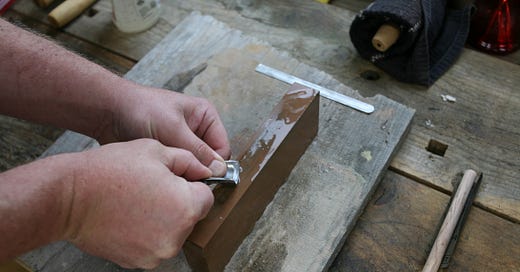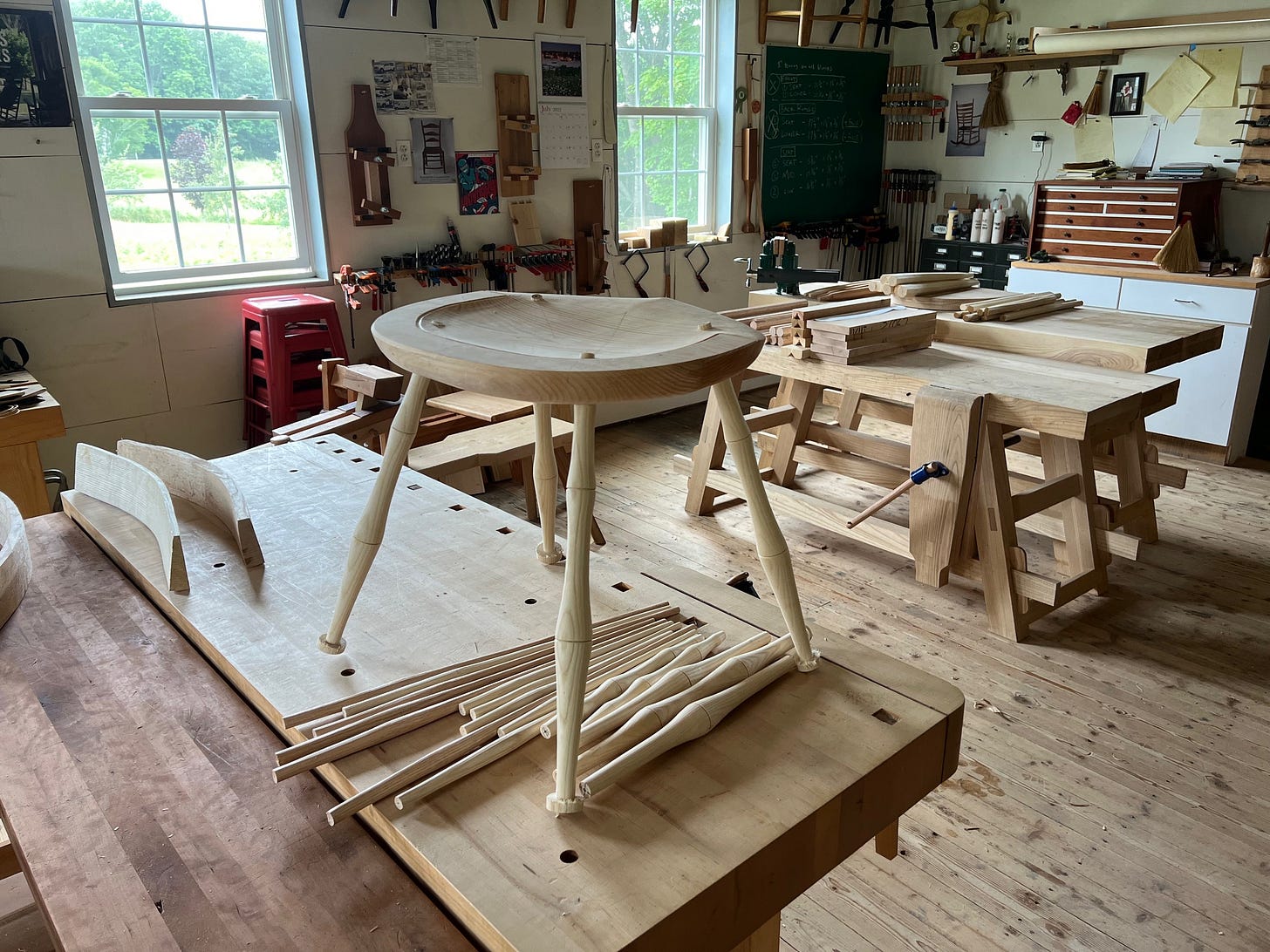I’ve set the Dunbar-style sack back aside for a moment in preparation for next week’s stick chair class here in the shop. It pains me to do so, since it’s starting to take shape.
A question that comes my way every so often.
Why do chair classes cost so much (it’s asked of other spaces and makers as well)?
The honest answer (and I can only speak for myself); because chair classes take a long time to prepare. Especially classes that have green woodworking elements. In my experience, there’s usually a week+ of preparation before the class, then a few days of upkeep, cleaning, resharpening and resupplying afterwards. For a week-long class, I usually plan on 2.5 weeks of effort. (And it’s work I’m excited to do. Thank you to those of you who have joined me before…either on the road or here in Maine.)
There’s usually a “cooking show element” to my greenwood classes (we place the prepared chicken into the oven at 375 degrees, then immediately pull out the cooked one). In these classes, I usually prep parts and allow them to dry, then students will make parts on the first day(s) of the class to replace those already prepped. Once students make a handful of green rungs and wet posts, we set those aside and pick up the ready materials.
We do it for two reasons:
It removes the pressure for the student to split, shave, and bend all the parts within the first day or two of the class. It’s a ton of work for someone just picking up the drawknife for the first time. I’ve run a class or two like this in the past…with all the work of making parts during the first days. Some students enjoy working each part to completion within their chair. But it’s a taxing approach, as the first days are a long physical and mental push…then there’s still a week of chairmaking ahead. In these classes, we are tired from the start.
The second reason; some of the parts stink. And this is exactly how it should be. As someone starts to learn a tool or a method, the first results may not be “chair-worthy.” Prepping parts ahead of time removes this stress (both for the student and for me, the instructor). Making parts with a drawknife and spokeshave takes time to get an “eye” and a “feel” for it. Some initial parts fail as the eye is trained and as the body grows comfortable using the tools.
I don’t knit, but I’d imagine that I’d make a few ugly sweaters before getting the hang of it. It’s good knowing this on day one of class. We may knit a few ugly sweaters at the start. Then, for the rest of the week, we’ll have the experience and feel for good work.
What happens to the parts we make on the first days? Those go towards future classes (if they’re of sufficient quality), or they become “set-up” parts, sample bending parts, dummy rungs, etc. Or firewood. Some will make it into future chairs, some won’t. But they’ll all play a part in the process.
I’ll share two tips from my week of material preparation and shop upkeep. I was taught the milling process from Kelly Mehler, who keeps his machines so clean and in top shape that the joint comes directly off the jointer.
And I’ll share the quick steps to touching up the Veritas tenon cutter blade. The cutters dull quickly with use. I’m not worried about a perfect edge so much as getting them back to making smooth shavings. (My basic thinking: better > bad)
Keep reading with a 7-day free trial
Subscribe to With Working Hands to keep reading this post and get 7 days of free access to the full post archives.




